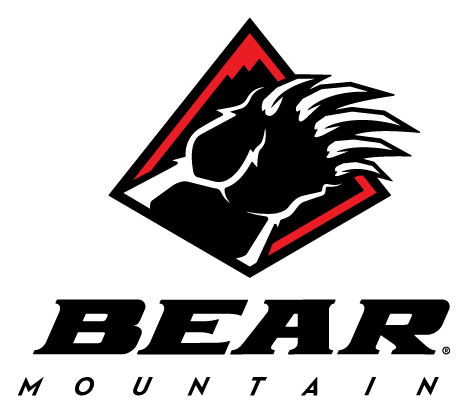
(Originally published in Issue 1.1. Subscribe for Vol. 2 here!)
By Blake Paul
When I was five years old, I was fortunate enough to be gifted a snowboard, and thus I began to learn the simplistic weightless beauty of sliding sideways through fresh snow. My family moved from the east coast to Jackson, Wyoming, in search of bigger mountains, deeper turns, and a more enjoyable outdoor life. I joined a snowboard team and began to ride with friends and a coach, exploring further into my newfound love of snowboarding. One day we got off our favorite chairlift in Jackson Hole and did a small hike with backpacks and shovels off the side of the resort. “We’re going to ride in the backcountry.” Our coach told us, “It’s considered out of bounds and not part of the ski resort.”
It was that day we learned the backcountry is where fresh powder and natural features are the obstacles, not machine-made terrain parks or halfpipes. It was something completely new and unpredictable. We spent all day building jumps, flying through the air, landing on our heads in powder, laughing, learning, and truly having the time of our adolescent lives. This day spent in the mountains and the others that soon followed began to stick with me, and left a deeper impact than the typical days of riding on the hard-pack snow within the confines of the resort.
About seven years later, the very first Natural Selection contest was brought to Jackson Hole. Completely ahead of its time, it offered a whole new take on competitive freestyle snowboarding. All my favorite riders, normally only seen in videos, were competing against each other in deep powder and natural terrain. I was in awe on the sidelines of Jackson’s famous freestyle gully; Dicks Ditch. The course was hand-dug with huge lips, hips, tree taps, and gaps. I watched Travis Rice boost a front seven melon over my head, landing in a cloud and barreling on to the next feature. The crowd cheered and my excitement for this type of snowboarding skyrocketed. It was mesmerizing to have first-hand access to the environment. I was watching pros blast tricks on extra- large versions of my favorite jumps at the mountain I grew up riding. The experience stuck with me again, ensuing a motivation to follow my own path and strive for success in freeride backcountry snowboarding.
“Oh man… deep dive here. We tracked everything, the whole season, for all three events, for all riders, staff, crew, machinery, generators, flights/travel, catering, hotels, shipping, vehicle mileage, sled fuel, heli fuel, jet fuel. Basically anything we could track and measure that had a measurable carbon impact. Once we had a handle on our total carbon footprint, we worked with Conservation International to offset 100% of that carbon footprint through one of their projects. Then we wanted to go one step further and worked with the May Ranch to offset that same footprint again, so we’d be 100% negative, instead of just carbon neutral.”

Re-inventing what snowboard fans can look to for competitive stature, does not of course, happen overnight. The year leading up to the contest didn’t exactly allow for the easiest conditions to make it happen. I’m not exaggerating when I say that Travis manifested the concept and brought it to fruition through pure will and determination. It’s widely agreed among the NST crew that no one else on the planet could complete this task. The natural obstacles were enhanced and constructed over three years with a ton of work put in by a dedicated build crew lead by long-time Jackson Hole legend Ranyon d’Arge and a high-class group of local snowboarders. They spent many months of summer and winter moving snow, dirt, rocks, and wood to construct landings and take-offs, while removing safety hazards, raking jump run-ins, performing avalanche control, and all other required maintenance and infrastructure for a venue of this magnitude. On the map, I counted over 40 main features, not even considering all the hidden obstacles and transitions stashed throughout the venue. Over time, I noticed how bonded the build crew was, and how stoked they were to see everything come to life.
It was February 1, and 24 of the world’s best snowboarders gathered in Jackson Hole to embark on a week of riding and competing in the first stop of the coveted brand new Natural Selection Tour. Jackson was on the eve of the third-ranked snowiest month in history, around 193 inches of snow fell through February’s 28 days. Local meteorologist Jim Woodmancy remembers:
“I have been forecasting the weather here for 30 years now and skiing Jackson Hole for almost 40 years and I have to say, February 2021 might have been one of the best months ever. Not just in terms of quantity of snow, but the quality of the snow. It was both deep and light, day after day!”

Travis gathered the whole crew and kicked off the week with a celebratory chant to the sky, a call to whatever or whoever was responsible for supplying good vibes and weather conditions. Circled together, we followed his lead in belting out obscure words and phrases, hoping our collective energy would grant us access to safety and success. This set the precedent that it was our duty to not only have fun and enjoy the contest window, while also presenting a sense of community and support from the entire crew involved. Travis was at the forefront of every part of the monstrous task and logistics to pull everything off , while simultaneously knowing he still had to compete and destroy the course in his classic fashion. Not too many individuals operate on his level and it’s a blessing for competitive backcountry snowboarding to have Travis as captain of the ship.
Each morning from then on felt like Christmas, waking up walking-distance from the lifts with a foot of fresh snow blanketed across the resort almost every night of the week. Due to COVID protocols, everyone stayed at the same hotel, so it was impossible not to crew up and blaze the mountain with groups of 20 or more. The days in-between the event may be more cherished than the actual contest days themselves. An aura and vibe was in the air that was unmatched by any feelings that snowboarding had bestowed on me before. One could compare the similarities to a group of surfers sprinting through hot sand toward a warm turquoise ocean, with perfect pristine lines flowing in. Everyone had a ‘kid in a candy store’ smile from cheek to cheek, hats and beards caked with snow as we repeated gondola lap after gondola lap. After a rough year, with limited travel and time spent together, it was an actual blessing to experience these pow days with a group of like-minded snowboarders from all over the world at my home resort.

The night before day one of the competition we had the draw for our drop placement, and each rider’s name was put in a randomizer that popped up on a TV screen at the bar. Once your name came up you were able to choose the bracket and order that you started in. I was part of the final four riders to get picked, and my options were slim. Two of the choices being either the first rider to drop, or to go against Travis Rice. Somehow I escaped both thanks to the kindness and pure balls of Chris Rasman choosing to go against Travis, and Gigi Rüf surprisingly taking the first drop spot with a laid back no-worries attitude, like it was his duty to kick this thing off . I don’t know if I could ever repay those guys in any way for their decisions.
Most nervous you felt all week?
Nils Mindnich: Man, probably when I fell in my second run. I was like, “f***ck!” and then proceeded to get super lost on the course. It was all bad, haha. I was also super nervous watching the other riders’ runs. I just wanted everyone to land the run they wanted.
What do you do to calm your nerves and build confidence before your runs?
Pat Moore: You can do that? No wonder why I’m terrible at contests, I just paced around breathing heavy.
If you watched the contest live, you know there was that “holy shit” moment that set everything off. I was third to drop in the start shack, the area was full of cameras, drones, and radio chatter. My whole body felt like it was going to collapse. I had never ridden the jumps or line I was taking before, and it really got to my nerves. It was windy with somewhat overcast skies, and fresh snow was blowing heavy off the trees making it hard to see. Gigi was up first ready to go—he dropped in with complete whiteout visibility. After his first few turns, the drone nicked a tree and we lost sight of him on the live stream. At this moment I think everyone was wondering, “How is this going to work?” At first glance, we couldn’t tell how the course, cameras, conditions, or anything was going to hold up for the highly anticipated broadcast. Then out of nowhere, the drone was back on Gigi, he had found his stride and continued burrowing through the deep snow. The visibility cleared, and he slashed his way down, coming to “The Wall,” the so-called “money booter” at the end with the big sponsorship branding. He approached fluidly, snow flying behind him after each turn, his arms wound up and he chucked a front seven out of nowhere. He floated and held his grab with classic timeless style, then landed perfectly in the sweet spot, first track. Everyone gasped and erupted with emotion. I looked over at the CEO of NST, Liam Griffin, and watched the stoke and sighs of relief wash over him. It was the “it’s on” moment, and from there the fire was lit for the rest of the event.


Other quick highlights included: Ben Ferguson’s back nine and sprocked methods. Ben rides with an unmatched spontaneity and flow, showcasing some of the best board control around. Chris Rasman and Travis Rice’s sudden death qualification was a full nail-biter and probably the most entertaining and tentatively watched brackets in the rider’s tent. Pat Moore and Nils Mindnich put down multiple sevens, unique grabs, with rock-solid style and landings. The overall tour champion Mikkel Bang front three-tapped a rock and rode half the course switch. Zoi Sadowski-Synnott proved she can handle any terrain and situation in front of her with style, poise, and a fun-loving attitude. Her back three indy and huge backflip on her victory run were some of the best tricks to go down that day. Hana Beaman laced multiple wildcats on the “aircraft carrier” feature displaying her endless years of expertise in backcountry riding. Sage Kotsenburg dropped a perfect cab nine. Bode Merrill Miller flipped the eagle’s nest. Austen Sweetin went huge off everything. And Mark McMorris truly showed his versatility; the most decorated slope-style medalist of all time arrived just ten days after a positive Covid test to double backflip, cab nine, front seven, and back seven, all with grace and strict calculation to take the win. Thus adding to the long list of his adorning accomplishments. I could keep spitting off these flutters in my memory, but I assure you it’s best to watch the recaps for yourself.
What was it like riding Jackson between contest days?
Mikkel Bang: Riding Jackson in between contest days was so nice, it was rad to ride and see the whole resort in the good conditions we had. I understand why people who ride Jackson become such great riders with the steep and featured long runs they have! Getting to ride with the locals and try their classic runs and warming up for the event was insane, and last but not least, it was rad to hang out and ride with all the other riders. Jackson Hole is dope!

Hearing snippets of Selema Masekela’s voice over the live feed at the beginning and end of the runs strung a nostalgic chord in my brain that took me out of the contest setting, and brought me back to my childhood glued to the X Games broadcast on TV. I revisited some of the replays and discussed the event with my good friends Caleb Flowers:
“If you landed something sick on the stream everyone in the room would jump up and shout at the TV like we were all there at the session with you.”
Caleb also spoke as if the contest was like an organized backcountry snowboarding version of a skate demo. Where it didn’t fully matter who won, but more that the audience got to watch every rider bring their own style to the course, putting on a creative live display. TruthfuIly, while I like the sentiment, I wouldn’t say Caleb’s comparison to the atmosphere being like a skate session completely aligned with my experience. I’m not much of a competitive person, nor did I ever see myself going head-to-head with the mental and physical strengths of immensely talented riders like Ben Ferguson or Mark McMorris. Simply put, my nerves jumped around like one of those vintage lie-detector needles on paper catching someone’s falsehoods. My knees felt weak and my breath short at the top of every run, no matter how many times I would try to convince myself of the classic cliches, “just have fun,” or, “act like it’s another run, no ones watching.” Those techniques just didn’t suffice. I applaud those that have implemented the mental fortitude required to compete. One common trait did hold true—as soon as I dropped in, all that pressure and nervousness went away. Beyond the occasional flutter of the two drones overhead, I don’t remember hearing or thinking much other than focusing on the task at hand. It almost felt like we were riding in an Amped videogame level, features were littered everywhere completely covered in pristine powder. It was genuinely euphoric, bouncing through the depths of the snow, taking flight, landing in perfect transitions. The course had that special power that pulled your mind away from any negative thoughts and placed you right in the moment where you wanted to be. It’s important to be reminded how powerful and positive the simple traits of snowboarding really are.
Highlight runs from a viewer's perspective?
Hana Beaman: I really enjoyed seeing how much Zoi improved from her first run to her last run. She learned how to adjust and figured it out so quickly, was able to translate her ability to the course, literally got better right before our eyes. That was a moment for me, seeing what the future holds for women's backcountry. Was so stoked, and yet was like, "oh shit" all in the same moment!
What was a standout trick to you?
Robin Van Gyn: Mikkel’s rock tap was a personal favorite I think because it just embodied something outside the competitive realm in snowboarding. It wasn’t just a trick on a jump, its was terrain personality showing itself and being used with creativity and perspective. Exciting to watch someone really take the entire spectrum into his run, reminded us to look harder at the course.


When the contest was over, the course opened up for those lucky enough to get the green light to drop, or sneak past the start shack. The build crew sent it first and were finally able to experience the fruits of their labor by stepping to all features they constructed. Despite tracks and bomb-holes from all the previous competitor’s runs, there was no holding back and the event space was ravaged and enjoyed by all in attendance. I felt like I was watching real snowboarding and real snowboarders ride purely off the feelings of joy and excitement. Mike McKelvey was at the top of the list to have eyes on, going huge off everything and stomping a full run with tricks that could have stood up to the pro’s runs in the finals, including two sevens back to back.
Mike seemed to be a piece of the heart and soul of the entire event and we will miss him dearly after his fatal avalanche accident within only a few weeks after the contest concluded. I think next year, everyone’s gonna ride a little harder with Mike’s abundant positive spirit and influence in the air.
Any noteworthy differences between NST and other contests you've competed in?
Zoi Sadowski-Synnott: One difference that stood out to me was the NST priority of optimal weather conditions. We targeted the best two days out of ten, which meant snow conditions were as good as they could be when we dropped in. That was super sick to see because it works out so well for everyone when you have the conditions everyone can ride their best in and see the sickest lines go down.


It wasn’t until I took a step back a few weeks after the contest that I realized how revolutionary and necessary this event was for snowboarding. There wasn’t much claiming, no glares of competitiveness, egos seemed hidden away, and general stoke to be there was on the forefront of the vibe. The NST captured the audience and cemented backcountry snowboarding in the mainstream contest setting once again. Opening up a world of opportunity in an almost untapped format and approach of the sport. Celebrating style, line choice, creativity, flow, trick difficulty, and a sense of progression and community between the competitive field. All of this going down on one of the best slivers of naturally featured snowboard terrain in the world. Coincidentally in the same spot where I got off a familiar chairlift 20 years before and experienced the joys of the backcountry for the first time.




















